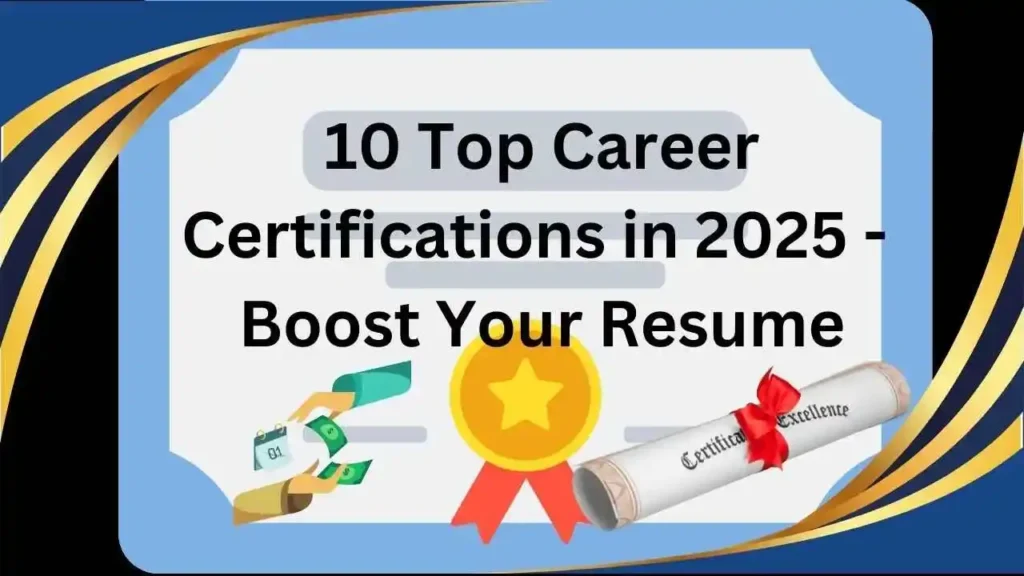A professional portfolio is more than just a collection of work—it’s your ultimate branding tool to secure jobs and establish credibility. In 2025, where the competition is fiercer than ever, a job-winning portfolio can differentiate you from the crowd and land you your dream role.
This guide dives deep into creating a portfolio that not only showcases your talents but also aligns with the latest trends and best practices in personal branding.
Table of Contents
Importance of Having a Portfolio
In 2025, digital transformation has pushed portfolios beyond just creative fields. Today, professionals in nearly every industry can benefit from having an online portfolio. Here’s why it matters:
- Visual Proof of Expertise: Portfolios provide tangible evidence of your skills and accomplishments.
- Enhanced Credibility: Recruiters and clients trust candidates who showcase real results.
- Stand Out from the Crowd: A strong portfolio grabs attention in a way that resumes can’t.
- Increased Job Opportunities: With portfolios, you can attract recruiters passively through platforms like LinkedIn, Behance, and even Google searches.
How to Create a Job Winning Portfolio in 2025
1. Define Your Purpose
Before creating your portfolio, identify its goal. Are you targeting freelance gigs, full-time roles, or client contracts? Your objective will determine the layout, tone, and content.

2. Choose the Right Platform
Here are platforms suited for different professions:
- Tech Professionals: GitHub or GitLab.
- Designers: Behance or Dribbble.
- Writers: Clippings.me or Medium.
- Generalists: Build a personal website using Wix, Squarespace, or WordPress.
3. Include Personal Branding Elements
Your portfolio should reflect your unique personality and style. Add:
- A professional headshot.
- A bio section that narrates your career journey.
- Links to your social profiles, particularly LinkedIn and Twitter, to strengthen your brand.
4. Focus on Design and Layout
- Use a clean, professional design with easy navigation.
- Highlight key sections like “About Me,” “Projects,” “Testimonials,” and “Contact Information.”
- Make it mobile-friendly, as recruiters increasingly view portfolios on their phones.
5. Optimize for ATS (Applicant Tracking Systems)
- Use text-based formats to ensure your portfolio can be read by ATS.
- Incorporate keywords from job descriptions to improve searchability.
- Avoid overly designed PDFs or graphics that ATS might not parse.
Free Tools for Creating a Professional Portfolio
Here are some free tools to build a polished and professional portfolio without breaking the bank:
- Wix: Perfect for beginners with drag-and-drop features and customizable templates.
- Canva: Great for designing presentation-based portfolios.
- Behance: Best for creative professionals like graphic designers and illustrators.
- GitHub Pages: Ideal for developers showcasing code and technical projects.
- Google Sites: Simple yet effective for professionals who want a no-frills online presence.
Key Elements to Include in a Career Portfolio
To make your portfolio job-winning, ensure it has the following elements:
- Introduction & Bio
Introduce yourself with a concise bio. Mention your key skills, professional background, and career aspirations. - Work Samples or Case Studies
Feature a selection of your best work with context. For example:- Developers: Add GitHub links or live project demos.
- Writers: Showcase blog posts, articles, or copywriting samples.
- Designers: Include high-resolution images of completed projects.
- Testimonials
Include endorsements or reviews from clients, employers, or peers. A brief testimonial adds credibility. - Skills & Certifications
List both hard and soft skills along with certifications that align with your profession. - Contact Information
Make it easy for hiring managers to contact you by adding email, phone number, or a contact form.
Examples of Standout Portfolios for Different Fields
- Design Portfolio
- Example: A graphic designer showcasing branding projects on Behance with detailed descriptions of the process.
- Writing Portfolio
- Example: A freelance content writer featuring articles and copywriting samples on Contently.
- Tech Portfolio
- Example: A software developer hosting projects, repositories, and documentation on GitHub Pages.
- Marketing Portfolio
- Example: A digital marketer sharing campaign analytics and content examples on a personal website.

Which ATS Tools Can We Use?
Applicant Tracking Systems (ATS) are commonly used to screen applications. Ensure your portfolio meets ATS requirements by using these tools:
- JobScan: Helps you optimize your portfolio content to match job descriptions.
- Resumeworded: Analyzes keywords and ATS compatibility.
- Workable: Widely used by recruiters; ensures your portfolio is machine-readable.
Top Digital Portfolio Tips for 2025
- Update Regularly: Keep your portfolio fresh with recent projects and achievements.
- Be Selective: Only include your best and most relevant work.
- Incorporate Analytics: Use tools like Google Analytics to track portfolio views and engagement.
- Leverage SEO: Optimize your portfolio with focus keywords like “job-winning portfolio” and related terms.
- Integrate Multimedia: Videos, infographics, and audio clips make your portfolio more engaging.
FAQs on How to Create a Job Winning Portfolio in 2025
1. Do I need a portfolio for every job?
Not necessarily, but having a portfolio tailored to your field can significantly improve your chances of being noticed.
2. Can I create a portfolio with no professional experience?
Yes! Use personal projects, volunteer work, or academic achievements to demonstrate your skills.
3. How often should I update my portfolio?
Aim to review and update your portfolio at least once every six months.
4. What’s the difference between a resume and a portfolio?
A resume summarizes your career history, while a portfolio showcases your actual work and accomplishments.
5. What’s the best platform for a digital portfolio?
The choice depends on your profession. For example, Balance for designers, GitHub for developers, and Wix or WordPress for a personal website.
Key Takeaway
A job-winning portfolio is not just a compilation of your work; it’s a demonstration of your personal brand and professional capabilities. With the right tools, design, and content, you can create a portfolio that opens doors to new opportunities.
Conclusion
Building a job-winning portfolio in 2025 requires a blend of strategic content, compelling design, and the right tools. Whether you’re a creative professional, developer, or marketer, your portfolio should tell a story that aligns with your career goals. Start now, and let your portfolio work as your most effective job-seeking tool.
For more tips, check out other articles in our Career Development blog category!

